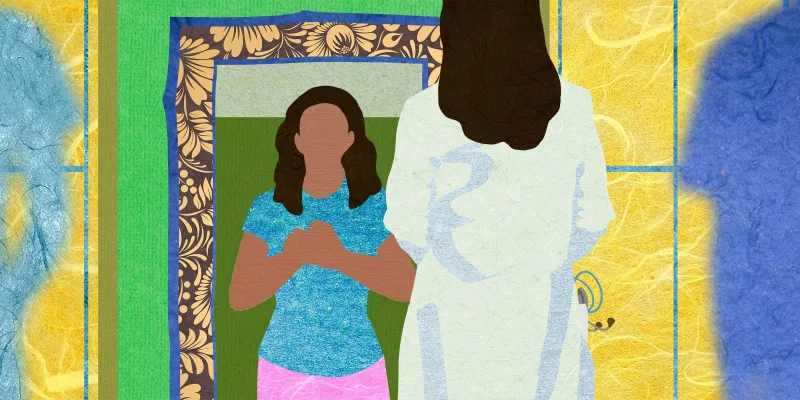This year’s AUA conference was the first in-person since 2019. After two long years of virtual conferences and social distancing, it was a true pleasure to see colleagues from around the world and get back to the rewarding spontaneous connections, collaborations and idea-sharing that happen outside the plenary and conference rooms.
At the same time, it was somewhat overwhelming after years of social distancing and virtual conference platforms to experience the sheer magnitude of what the field of urology encompasses and the AUA offers – with over 100 hours of programming covering all subspecialties and numerous societies. It seemed at times that the AV support was overwhelmed as well.
As female pelvic medicine and reconstructive surgery (FPMRS) specialists, there were several technologies / topics featured at the conference that stuck out to us in that while they have been emerging for some time, their potential and impact on our practice remains to be determined.
Next-generation sequencing & UTIs
The issue of a patient with urinary tract infection like symptoms (UTILS) but with negative standard urine culture is a vexing common problem for many urologists and patients. Next generation polymerase chain reaction (PCR) testing has emerged over the past several years, offering an opportunity to detect multiple organisms with high sensitivity and specificity.
Saturday afternoon’s plenary highlighted the unclear role this advanced molecular testing plays in UTI and UTILs. Dr. Duane Hickling’s segment covered molecular diagnostics available for UTI, reviewing the advantages of increased sensitivity and quick turnaround (~one hour) of next generation sequencing (NGS). He presented data from a study showing that only 13 of 44 patients treated for acute cystitis had positive standard urine cultures while NGS was positive in 100% of patients. At the same time, 21/22 asymptomatic controls in this study had positive NGS. As Dr. Sonali Advani had stated just prior, “better diagnosis of bacteria in the urine does not equal better UTI diagnosis or care.” Dr. Lenny Ackerman brought this point home in the following segment, reviewing the literature on enhanced quantitative urine cultures and NGS, which has not shown improved treatment outcomes over standard culture.
In summary, molecular testing offers the ability to quickly identify bacteriuria with higher sensitivity compared to traditional methods. But we know that bacteria in the urine is not the same as infection. The largest outstanding issue with how this will translate to improved patient care is identifying appropriate patients we should be using it in – those with high pre-test probability of infection. Identifying a specific biomarker for infection, for example, would be an excellent diagnostic pairing. Other outstanding issues include standardizing reference libraries for NGS outputs and improving accompanying antibiotic sensitivity testing abilities.
Single port robotics
The Intuitive da Vinci single port (SP) platform was cleared for urologic cases in 2018 and its utilization appears to have been gaining traction among urologists year over year. This year’s meeting included multiple sessions featuring SP technology. In Monday morning’s plenary session on robotic technologies, Dr. Simone Crivellaro reviewed its advantages in small spaces, highlighting its usefulness for transvesical prostatectomy and retroperitoneal partial nephrectomy. A video on transvesical SP prostatectomy technique won best video award (Dr. Alp Tuna Beksac) as well.
Our impression is that there is limited usefulness however for the SP platform within the FPMRS field. At Saturday afternoon’s voiding dysfunction / female urology video session (V6-02), the group from Rutgers presented a video on SP robotic sacrocolpopexy. The video highlighted its disadvantages (difficult traction, need to adjust robot positioning during case to access full range of field from sacral promontory to distal vagina) but did not make a great case for its advantages. The 86-minute mean operative time is attractive but likely single high-volume SP surgeon-specific and did not include perineorrhaphy or vaginal procedures many FPMRS surgeons would perform concomitantly at time of sacrocolpopexy. Additionally, the SP platform has a very steep learning curve as the authors themselves emphasized.
While not discussed at the AUA this year, one niche within FPMRS for SP robotics may be select vesicovaginal fistula repairs. A recent tweet from Dr. Mohamed Eltemamy at the Cleveland Clinic shows its utility in a case of a nulliparous woman with posterior vesicovaginal fistula in which vaginal access was not possible. He performed a transvesical repair using the SP system, with excellent visualization and quick repair. This approach would only be appropriate in certain circumstances, where vaginal access is poor, there is no concern for ureteral involvement, and when interposition flap is not possible or needed.
Implantable tibial nerve stimulation
The implantable tibial nerve stimulator (TNS) eCoin (Valencia Technologies, Valencia, CA) recently became the first of its kind to be FDA approved for market for urgency urinary incontinence. In one of the Friday podium sessions (PD34), Dr. Alexandra Rogers presented data on 2-year outcomes for eCoin from a small non-randomized prospective study. Despite small numbers (n=26) and lack of a control arm, the significant rate of 50% or greater improvement in symptoms (~70%) was notable and higher than usual placebo/nocebo effects seen in trials in urge incontinence populations. The lack of serious adverse events and ability to place in an office setting was also promising.
Another implantable TNS which has CE marking in Europe but is still under investigation in the United States is Bluewind’s RENOVA iStim. Unlike eCoin, which is a leadless suprafascial implant, iStim is placed under the fascia along the tibial nerve and involves a programable lead. One abstract in the late breaking abstract session (LBA2) discussed safety but not efficacy data in 151 patients, with no serious adverse events in 76 patients with 12-month follow-up.
Currently, percutaneous tibial nerve stimulation (PTNS), implantable TNS’s intermittent sister therapy, is included as an option for third-line therapy in AUA/SUFU guidelines for overactive bladder along with sacral neuromodulation and onbotulinumtoxinA. Where implantable tibial neurostimulation will fall in updated guidelines remains to be seen. Further study is needed to compare efficacy against established third-line options and differentiate the various available implantable TNS products. Perhaps most importantly in the shorter, wide utilization for eCoin is limited by lack of dedicated codes and poor reimbursement so funded study will likely be the only source of data for now.
Dr. Zillioux has received a grant from Medtronic. Dr. Goldman has received the Medtronic investigator initiated grant, consulting fees from Bluewind, Bioness, Sacramed, Laborie, Cook, Allergan, Medtronic, Astellas, and Urovant. He has also received fees for participation in review activities such as data monitoring boards, etc. from Bluewind.
Image by Rudzhan Nagiev / GettyImages






